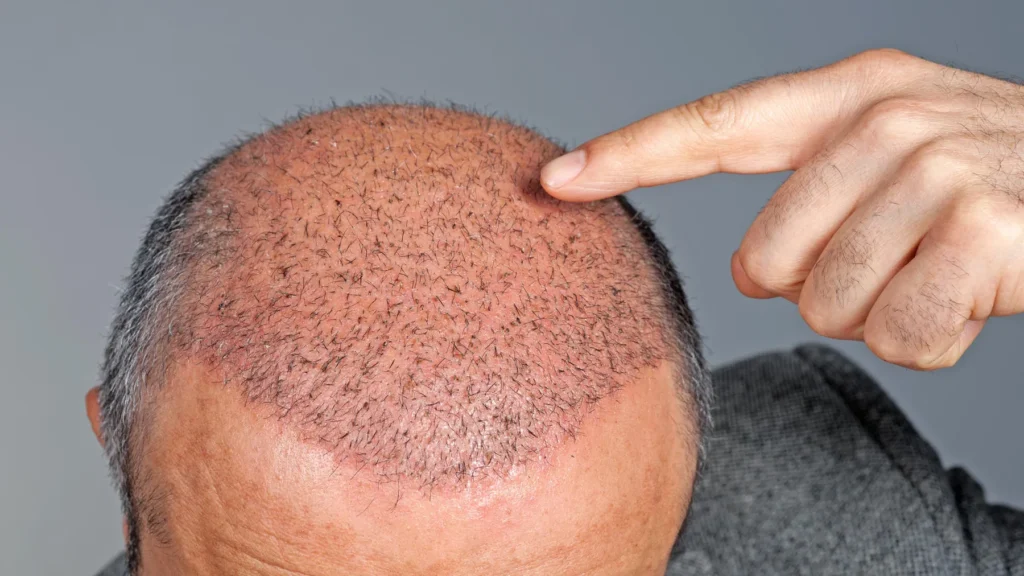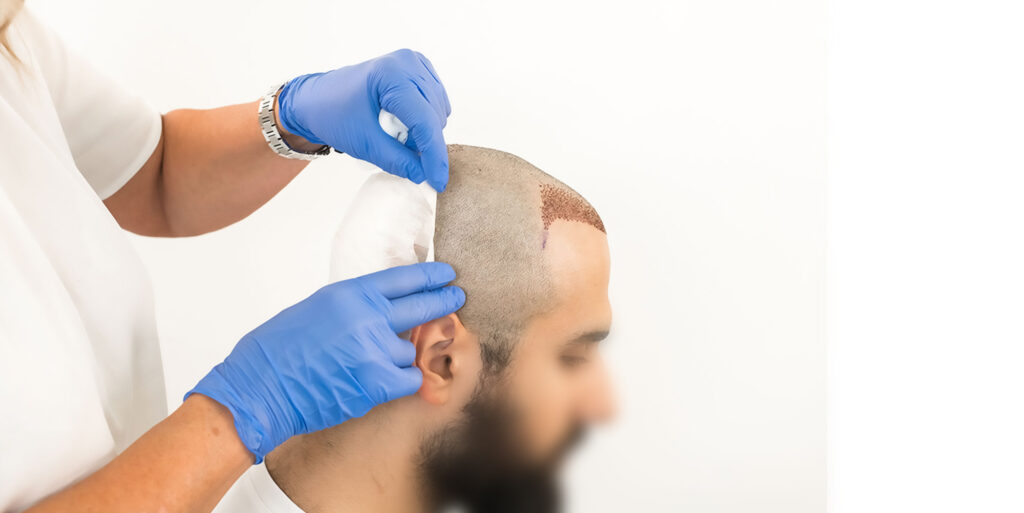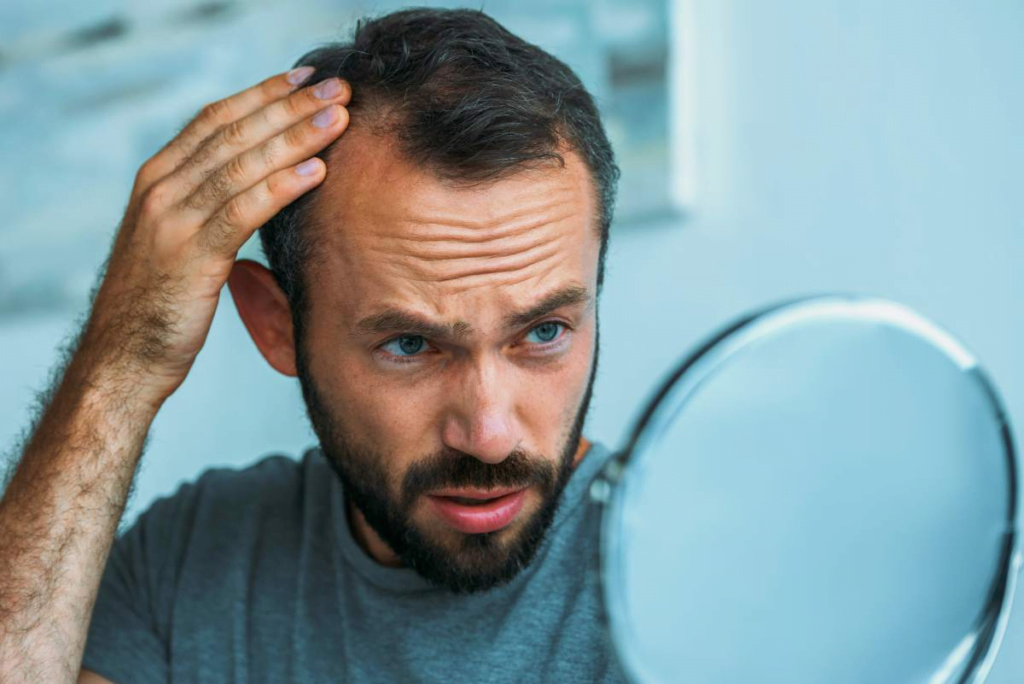
Having a hair transplant is an important decision both emotionally and physically for many people who want to regain their hairy appearance. The results obtained at the end of this process are very important as they will generally increase the person’s self-confidence. The number of people who want to hide the scars after transplantation is quite high. One of the most common questions that comes to mind at this point is: Does hiding the scars during the healing process damage the transplanted hair?
In this article, we will discuss in detail the methods of covering the scars after hair transplantation, the effect of these methods on hair follicles, which behaviors may be objectionable and what should be considered during the healing process.
İçindekiler
How Sensitive Are Transplanted Hair?
First of all, it is necessary to know the following about after the transplantation process: The first few weeks after hair transplantation is the stage when the transplanted hair follicles attach to their new places. Hair follicles are very sensitive during this period. Incorrect applications to the hair during this period can damage the roots and damage the transplanted hair.
Especially the first two weeks are considered critical by experts. During this period, the roots crust over, healing begins at the micro level and the process of integration with the skin takes place. Therefore, this stage is good in terms of visible results.
What are the Details Behind the Desire to Hide the Scars?
The scalp may have some reactions after hair transplantation. It is quite normal to see redness, tiny scabs, sometimes slight bruises on the scalp. Especially in the donor and transplantation areas, these scars are noticeable from the outside. Some people may feel the need to hide these temporary scars in order to continue their social life comfortably. However, the methods used to do this may damage the hair transplantation process.
Can Makeup, Hat and Spray Be Used After Hair Transplantation?
- Foundation and Concealers:
Some people may want to use concealer cosmetics to cover the redness near the hairline. However, these products can clog pores, cause skin irritation and damage the healing process. It is not recommended by experts to use chemical-containing products, especially while the hair follicles are still holding on. These products may interrupt the development of hair follicles by reducing their contact with oxygen. This may reduce the efficiency of hair transplantation. - Wearing Hats and Beanies:
Many experts do not recommend wearing a hat in the first week. This is because the hat may put a little pressure on the transplanted area and may damage the transplanted area. Especially tight headgear can cause the transplanted grafts to dislodge and the scabs to lift. If you have to wear a hat, at least 7 days after the transplantation, you should choose a loose and soft model that does not touch the scalp. - Colored Hair Sprays and Camouflage Powders:
Products in the form of sprays or powders that pretend to increase hair density should be avoided for the first month. Such substances can both irritate the scalp and jeopardize the attachment process of the grafts. Such products negatively affect the healing process.
Is There a Safe Way to Hide Scars?
First of all, remember why you set out for a hair transplant and give the hair follicles time. Although there are ways to cover the scars left from the procedure, the first thing you should think about is to protect the health of the transplanted hair. These scars are short-lived and are a harbinger of permanent beautiful hair. Don’t let short-term solutions damage your long-term good looks.
Before talking about safe ways to cover the scars, it may be useful to know that it is best not to apply anything to the scalp, especially for the first 10-14 days. After this period, you can use the following methods with the approval of your doctor:
- Mineral-containing, breathable make-up products: Can only be used to cover mild redness around the hairline. It should be applied with tampon movements and should never be rubbed. However, it can be risky to apply to the rest of the area.
- Wide brimmed hats: Special production hats that do not touch the skin and do not put pressure on the grafts can be preferred. These hats are also useful to protect the transplantation area from the sun.
- Hair styling products: They should only be used after 30 days and only with a doctor’s approval.
What is the Expert Opinion on this Subject?
Hair transplant specialists say that the successful completion of the healing process is directly linked to the patient’s attention to the care process. In addition to care, patience is another important factor. Small mistakes in the early days can cause irreversible consequences in the long run. In particular, applying pressure to the transplanted area can cause graft loss and cause sparse images. This causes a patchy appearance. Therefore, no matter how intense aesthetic concerns are, short-term concealment methods are not more important than long-term results.
Patience Pays Off

It is quite natural that scars after hair transplantation cause aesthetic anxiety. However, this is a natural part of the process and a harbinger of healthy hair. It takes time for the transplanted hair to take hold, for the scars to heal and for a natural appearance to form. Every product or physical contact used in this process carries the risk of damaging the hair follicles. Every application made for the sake of hiding the scars can jeopardize successful results.
Therefore, respecting the healing process, following the doctor’s recommendations to the letter and meeting temporary aesthetic concerns with patience will maximize the efficiency of hair transplantation. Remember, the scars of a well-done hair transplant fade over time, but the scars of impatient interventions may be more permanent.
Hairtrans.com was founded by world-famous plastic surgeon Dr. MFO, who is an expert in facial feminization or facial masculinization surgeries, and is managed under his leadership. Would you like to have a hair transplant under the coordination of a plastic surgeon with many years of experience?
Whether you are a trans woman or a natural born male or female, if you are looking for the best hair transplant, contact us now.


